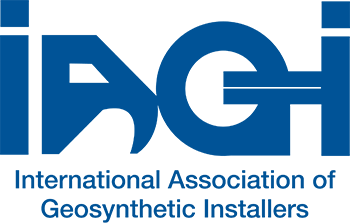Step by Step Guide for CWT TestingAll the information that you need to conduct the CWT exams is contained in the Proctor Manual for your specific material type. This is a simplified version of what is contained within the Proctor Manual. In the case of any discrepancy, the Proctor Manual will govern the testing procedure. 1. Experience:The first requirement is that your welders meet the minimum experience level for the type of geomembrane being tested. Each Proctor Manual will give you the minimum required for the specific geomembrane type. Each test candidate will be asked to provide a resume of experience that contains contact information for the jobs cited and a government issued identification card. 2. Proctor:A Proctor is needed to coordinate and oversee the exam process. Proctors are listed on the IAGI website. IAGI recommends that you look to your suppliers for Proctors. Welding equipment suppliers and geomembrane suppliers may have people who can Proctor. You make arrangements for testing directly with the Proctor. While IAGI strongly recommends that you a Proctor experienced in giving this exam, IAGI can work with you to have someone local conduct the testing for you. All Proctors are required to go through a training webinar to administer the CWT. One Proctor may test a maximum of 12 people at a time. More than 12 candidates require a second Proctor or another day of testing and a high degree of organization. 3. Set Date & Order Exams:Select the date to conduct the tests in conjunction with the Proctor. Have the Proctor order the exams. You will need to select the material type and language of the exams. 4. Assemble the Geomembranes Needed:The certification exam requires the use of a variety of geomembrane types in order to comply with the exam requirements. Be sure to follow the Proctor Manual in assembling the correct mix of products. One of the biggest reasons for failure is the using the wrong geomembrane mix. Pre-cut all geomembranes in advance of the testing to make the process go smoothly. 5. Test Preparation:The test candidate can review the study guide. Remind the technicians that if they know the industry accepted standards and know their job well, they should do fine on the test. If you, as the coordinator, suspects someone does not read well, ask the Proctor to read the written exam out loud. This is a permissible activity and adults are usually loath to admit (especially to their employer) that they do not read / comprehend the written word well. Error on the side of reading out loud if you have any doubts. This is not a test to determine read comprehension but rather whether they know what they need to perform well in the field. 6. Set up the test area:Set up a meeting room with plenty of space between candidates for the written exam. The hands-on portion can be conducted in a warehouse. Allow plenty of space for each candidate to conduct their welds. Remind your technicians that while they make work together in the field, that won't be allowed during the exam. Depending upon the available space and equipment, 3 - 5 people can weld at one time. The other candidates cannot loiter in the area during the test. |
